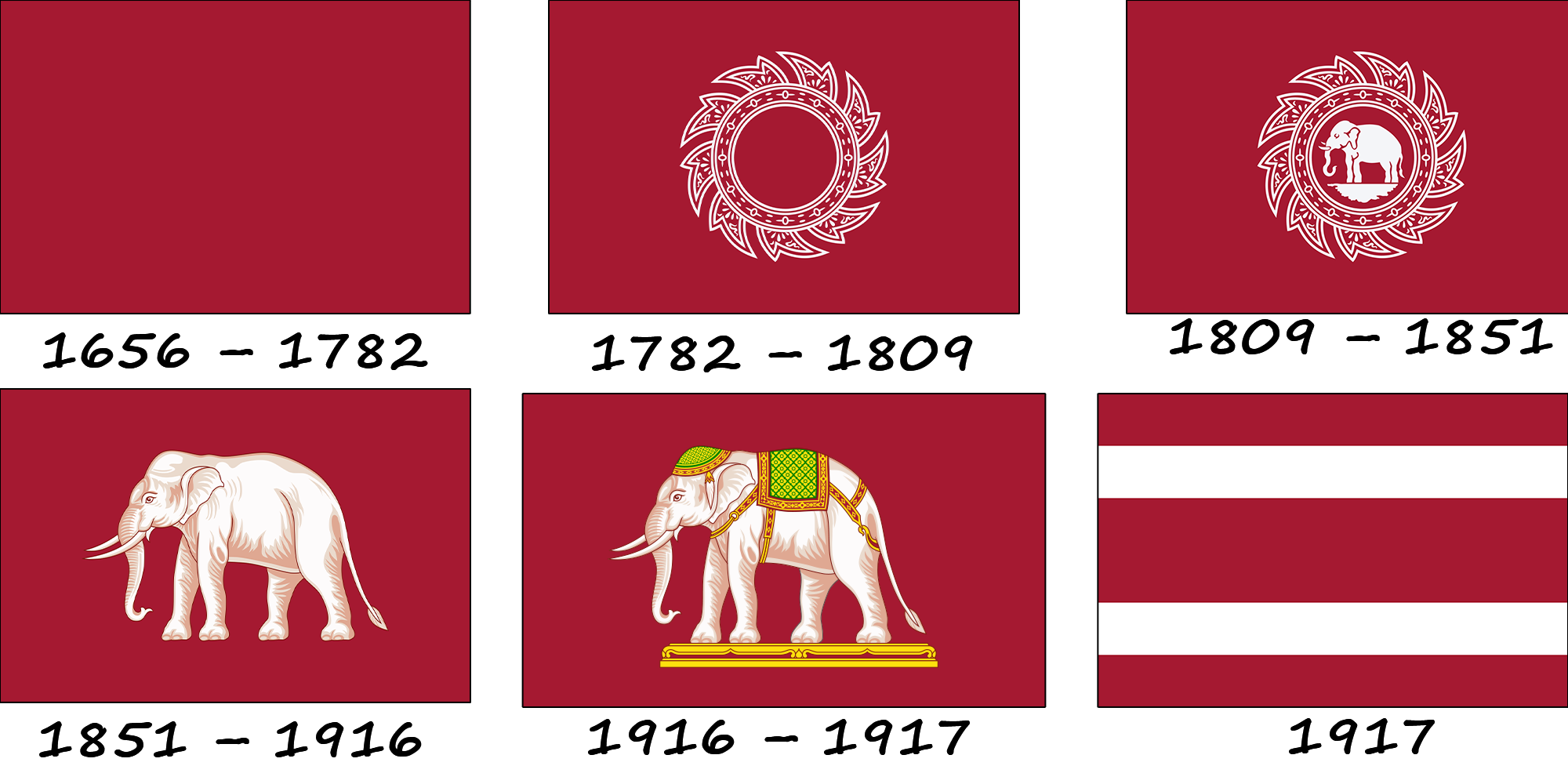During the Ayutthaya period, the red flag was used as a symbol of a Siamese merchant ship trading with foreign countries in the west. During the reign of King Narayana, there was trade with France, and the red flag was raised in place of the Dutch flag to symbolize respect for the French. Since then, the red flag has become the national symbol of Siam. During the Thonburi period and the early Rattanakosin period, the red flag continued to be used on ships that traded with other countries. Instead, royal ships, to distinguish themselves from merchant ships, received the image of a white "Chakra" in the middle of the flag as a symbol of royalty.
During the reign of Buddha Loetla Nafalaya (Rama II), he received 3 large white elephants as a gift, which was a great honor. Therefore, he decided to depict a white elephant in the middle of the chakra on the flag, which meant "The King who has a white elephant". This flag was used only on royal ships, and for ordinary merchant ships, it was solid red. During the reign of Mongkut (King Rama IV), Siam signed a trade agreement with Western countries, which resulted in the arrival of cargo ships from Europe and America. On this occasion, a consulate was placed, which raised the national flag of its country. Therefore, King Mongkut decided to abolish the red flag and use a flag similar to the Royal Ship as the national flag of Siam. The image of the white circle (Chakra) was removed, leaving only the image of a white elephant in the middle of the red flag. The size of the elephant was also increased.

During the reign of King Rama V, the Siamese Flag Act was issued, which had a red cloth with a white elephant. However, his successor, King Rama VI, issued an additional order to change the national flag to a red background with a white elephant standing on a pedestal with its face turned to the flagpole. The use of the white elephant flag was abolished in late 1916. This decision was aimed at facilitating the production of flags depicting the elephant for national use. Changing the flag to a striped flag also helped to avoid mistakes during installation, when it was hung backwards and the elephant appeared upside down, which is shameful. And if you change the flag to the usual stripes of white and red, then people will be able to make it for their own use and this will help eliminate the problem of incorrect installation.
Later, King Rama VI suggested that the middle stripe should be blue, because these were the colors of the Allied flags in World War I. Such changes made Thailand more favorable to these countries. In addition, these colors would remind of His Majesty during important events. So the King decided that the red stripe should be replaced with blue, which is one of the traditional colors of Thailand. In addition, it was the King's favorite personal color, as it corresponded to his birthday according to Thai astrology, which falls on a Saturday.
The flag of Thailand has five horizontal stripes of red, white, blue, white and red, with the central blue stripe twice as wide. The design was approved on September 28, 1917, by royal decree issued by Rama VI. Since 2016, this day has been a national flag holiday.






